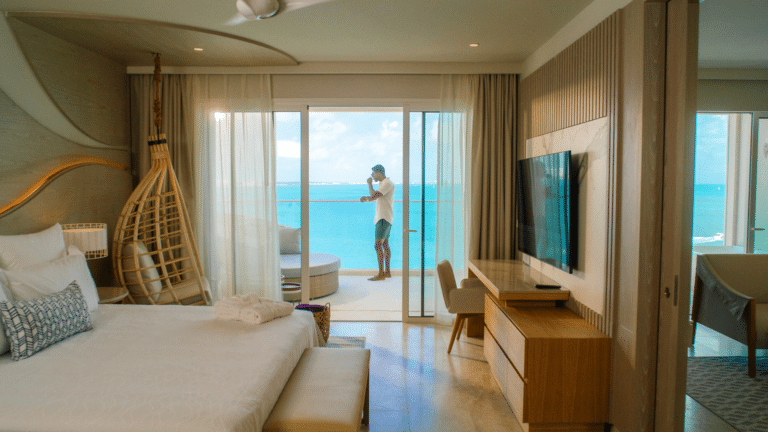In order to maintain a significant web presence, your business needs more than just a solid website. According to HubSpot, there are almost as many websites online today as people, with more than 500,000 being created every day. In other words, it’s going to take more than a well-structured site to attract potential customers. Users need a convenient means to find your site, and the most effective way to accomplish this is through social media.
If you know anything about posting online, you know that the most important element of your campaign is the quality of your content. Without first generating engaging, interesting material for your pages, you’re bound to have difficulty creating a significant presence. But the context in which your work exists is equally important. Dr. Horst Stipp, an executive at The Advertising Research Foundation, claims that “the very best ads probably work in any context, but they are likely to work even better in an optimal context.” Without fully understanding the position of your content in the industry’s framework, nothing that you post will make a personal impression on your audience. A good social media campaign will provide your marketing team with key insights for you to contextualize your market.
The following comprehensive guide lists five key principles to consider when it comes to posting on social media, and the overall question you should attempt to answer when implementing these values.
1. Research & Identification
Overarching Question: What kind of content is your target market looking towards to solve their problems?
The most basic first step in developing a marketing strategy is identifying your target market. As a marketer, you have to fully understand the type of people you’re looking to reach, as well as the type of content they’re consuming. To create valuable material, you need to know what problems your audience is looking to solve.
Once you’ve clearly established this goal, you must identify which platforms are relevant. Consumers use different networks for different reasons, and understanding this reasoning is the key to picking which platforms will benefit your brand. Where they go to find answers varies widely by the user, so be sure to determine which interface will best market your brand accurately.To better understand the uses and features of the most popular networks, check out this article by Digital Marketing Institute.
Hot Tip: In this step, your competition has the potential to be your greatest asset. Assess which platforms your competitors find appropriate and research what makes their posts effective. How can you competently translate these findings to benefit your brand?
2. Scheduling & Organization
Overarching Question: How can I develop a clear and concise timeline to effectively outline the content I plan to publish?
Another fundamental element of your social media campaign is a detailed calendar. Your team should have a shared timeline that outlines key checkpoints in the publishing process and includes scheduled audits, posts, regular analysis, and any other necessary initiatives related to your social media efforts.
Auditing your social media involves evaluating your existing content for effectiveness. Which posts performed well? What content didn’t engage as many users? Why? Your audit should help answer these questions as well as refocus your social media goals. For help conducting an audit for your content, use this guide by Hootsuite.
With your team members, generate a thorough content calendar to plan a workflow for publishing posts. An organized and elaborate post schedule will help keep posts cohesive, assure a backlog of material, and allow members to monitor each other’s progress.
Hot Tip: Be sure to keep an eye out for duplicate content, improper formatting across platforms, and imposter accounts posing as your business.
3. Timeliness & Relevance
Overarching Question: What makes my target audience share and interact with posts, and how can I emulate those attributes?
It’s good to know your audience’s interests, but you have to take it a step further when it comes to social media. What are they talking about? This goes further than what they’re interested in or what their hobbies are – what type of content do they discuss and share? And why?
Once you narrow down the winning qualities of these posts, try to determine how you will repackage them to fit your brand image and content. Many popular posts are based on fads and trends – it’s important to keep track of these subjects to spark themes for organic content. Hashtags are a great way to monitor what users are sharing – narrow down these trending topics for industry relevance in order to stay timely.
Techniques like newsjacking allow marketers to remain current and reflect upon the latest events within a sector. This marketing tactic involves utilizing news stories and media announcements to promote and capitalize on content.
Hot Tip: Try not to rely on trendy material to fill your content calendar – viral subjects are demonstrably hard to track in terms of a success timeline. Instead, regularly assess these trending topics for relevance and importance, and use them to supplement existing content.
4. Relatability & Transparency
Overarching Question: How can I appear more personable and genuine to my followers?
Be sure to appear human to your followers. Users are less likely to interact with you if you do nothing but advertise, promote, and solicit on your page. One easy way to come off as more authentic on social media is by utilizing features like Stories, Live Video, and Reels. These informal, simple-to-create interfaces allow for more spontaneous, natural content that requires little planning or design experience to produce. Plus, it presents information at a convenient time for users.
Although we typically use our online posts to highlight our accomplishments and strengths, periodically sharing our mistakes and setbacks can be productive too. Not only do bloopers make your brand appear more relatable and authentic, it’s a great avenue for follower feedback. Showcasing your errors and faults provides a platform for advice and tips from others in your industry.
Lastly, be sure to respond to direct messages (DMs). This shows consumers you’re approachable and accessible in case they have urgent questions or issues. A quick, detailed response through DM shows a user that customer service is a priority. Ideally, an agent would be responsible for monitoring this inbox and responding as needed.
Hot Tip: Looking for more detailed advice on transparency? Forbes has a great guide for keeping it real online!
5. Inspiration & Partnerships
Overarching Question: In what ways can I utilize competitors, role models, and influencers in my social media strategy?
It doesn’t matter how established you are in your industry – other individuals and companies will always be helpful in implementing your marketing campaign, particularly online. Whether these entities are your competition or your inspiration, they’re foundational when building your social media strategy because they can give you direction and insights specific to your market.
Don’t be afraid to reach out to influencers and industry leaders in an effort to collaborate. What big names share expertise relevant to your brand? How can you work with them in the future to establish credibility with their audience? Collaborating with an agency in this role is an excellent way to get genuine leads that will benefit from your content. If you’re having trouble finding someone to partner with you, keep sharing and discussing pertinent works – it’ll happen eventually!
Most importantly, don’t compare yourself to others on your feed. All brands vary in goals, approaches, and values – and everyone is in a different stage of their marketing journey. Again, a healthy marketing plan includes monitoring your competition and motivations, but weighing your accomplishments and failures with someone else’s will only bring disappointment and frustration.
Hot Tip: Follow competitors on your personal accounts to see how they appear organically in a follower’s feed. What catches your eye about their posts? What causes users to interact with their content, and how can you apply this to your own campaign?
Still need help advancing your web exposure?
Of course, implementing these techniques will be different for every platform and company. Overall, the most important objective with social media is ensuring your content is consistent, coordinated, and on-brand. With this overriding goal in mind, you can build a powerful online presence, effectively attracting an audience and ultimately building strong brand recognition.
If you’re looking for further insight, reach out to Forge Apollo for a personalized marketing strategy! We’ll guide you through every step of implementing a method to jumpstart your business’s campaign.









